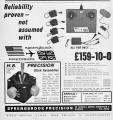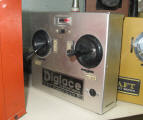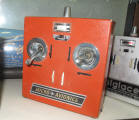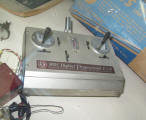Helicopter Radio Gear
Reed gear was not practical for helicopter control though it could be done as per the Lockheed venture in 1968. The nature of helicopter dynamics would require proportional four channel control in order to be effective; initially this will be considered the minimum specification requirement for inclusion.
Radio units of the 60's and 70's were generic and could be used for any application, it was to be many years after the introduction of radio control helicopters before transmitter configuration and internal operation was focused on what was to become a very specialised control requirement.
Sections will cover decades in basic detail with manufacturers providing specific helicopter radio equipment covered in more detail.
Pre 1970
As you can see there are many manufacturers offering 4 channel plus proportional radio control sets. Additionally, building your own was also popular as it was much cheaper than ready made and the electronics of the day only required reasonable soldering techniques to achieve reliable results; despite this, even in kit form it was expensive and not every 'average' modeller could afford a four channel set. Even then the sets were basic and in many ways crude being assembled from individual components on a single sided circuit board with transmission on AM (Amplitude modulation); this did though make it very easy for home building plus tuning required nothing more than a 'multimeter' and an insulated 'instrument' screwdriver.
OS Digitron D4 - Radio gear evaluation and test - March 1968
RCS Digi 4 - Radio gear evaluation and test - April 1969
American Aircraft Modeler also conducted a review of all the newly available radio equipment for 1969 in the USA which was quite an undertaking and located at the link below to the Airplanes and Rockets web site;
Airplanes and Rockets.com - RC equipment survey 1969
Note that even the 'top of the range' sets were very basic compared to the specifications of transmitters available only a few years later; mechanical trims and either switches or sliders for auxiliaries being the only additional features. You will see as time progresses, radio development generally 'lagged' aircraft development with a need being identified followed by a manufacturer providing the facility. This is fairly obvious though occasionally a radio development was made before the need identified (at least in practical terms) however, these tended to be more for increasing sales.


















